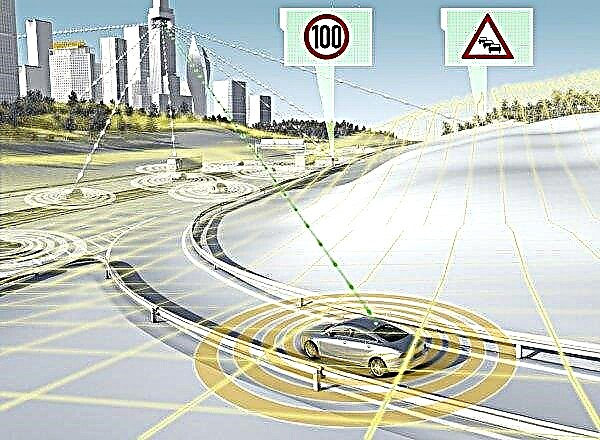
When it's plus 30 outside, even a car equipped with modern air conditioning runs the risk of becoming like a sauna. And if the car does not have such climatic technology, but there are problems with the engine cooling system? What to do in such cases?
Where to hide from the sun

One of the reasons for overheating of the car can be a long stay under the scorching sun rays. And no matter how much the car, which has taken a plentiful thermal bath, has an advanced climate control system: the interior of a "hot" vehicle is unlikely to have a high level of comfort.
To avoid such a nuisance, you simply should not leave the car for a long time in the sun. Better to find a place for her in a cool underground parking, which, however, is not so easy. But even in a regular garage, in a multi-level parking lot or under some kind of awning, the car does not heat up as much as when exposed to direct sunlight.
If there are no nearby structures that can shelter the car from the sun, it is advisable to try to put it in the shade. In this case, one should take into account the property of the shadow during the day to change its drawing. After all, a site that is reliably shaded at 10 in the morning can become a hot frying pan by 15 o'clock.
If there is a problem with the shadow, then it is worth trying to protect at least the front of the car from overheating, so that you can then simply sit on the chair and hold the steering wheel. To do this, the car is parked with the trunk towards the sun. Or the hood, if it has a sunscreen.
Heat reflectors

Such devices allow not only to protect the interior of the car from burnout, but also to significantly reduce the temperature of the interior trim, which sometimes heats up in the heat up to 80-90 degrees. And plastic elements during the trip sometimes almost glow under the sun, so much so that it is simply impossible to touch them.
Structurally, the sunscreen has two reflective sheets with a heat-insulating layer. For maximum effect, these glossy panels are installed on the front glass of the car, and from the outside. It is still better to leave the heat outside than in the cabin.
A variety of fasteners can be used to install reflective shields on a machine, which, however, tend to loosen their grip over time and simply come off. Therefore, it is better to buy a sunscreen equipped not only with corner clamps, but also with central ones.
The size of the sunscreen also plays a role. A panel that is too small will not be as effective, and too large will lag behind the glass, and moreover, it is more difficult to mount.
The bigger thing is a car cover made of reflective material. Such "clothing" reduces the heating of the body, reduces damage from ultraviolet radiation to the surface of the car, moreover, it is less dusty. To reduce the risk of theft of this cape, it is better to use it in guarded parking lots or in those places where unauthorized access to the vehicle is limited.
But even in the absence of a reflective screen or case, you can use some simple and effective methods of protecting the car body from overheating:
- wash the car more often, since clean cars are less exposed to heat than dirty ones;
- before driving, "run" with a damp cloth on the steering wheel and gear lever;
- light material on the dashboard or a towel on the steering wheel will reduce the heating of the passenger compartment and protect the plastic elements from burning out.
- use tinted glass and window blinds, however, if you violate the rules for their use, you can "get" to a fine.
Air cooling

If the car is equipped with air conditioning, then it will be easier for it to cope with overheating. But in this case, it is advisable for the owner of the car to follow a few simple rules.
So, if you are planning a trip in the heat, then first you need to expel hot air from the car. To do this, a pair of windows are opened diagonally and the air is blown into the cabin without air conditioning. After a minute or two, the windows can be closed and the air conditioner turned on. The main thing here is not to overdo it with cooling and not set extremely low temperature values, or even a cold is not far away.
When a comfortable microclimate is established in the car, it makes sense to start the recirculation mode, in which the air conditioner will move the already cooled air, and not lower the temperature of the fresh one. But you should not do this right away, because while the heat is still inside the car, there will be no sense from this function.
However, standard air conditioners are not installed in all cars, and even climate control systems are even more so. Then the owners of cars deprived of such luxury, it remains to fight the heat with improvised means. For example, soak a stored rag in water and put this material on the air ducts so that the evaporating moisture somehow refreshes the interior.
If it is advisable to keep the windows of a car with a working air conditioner closed during the trip in order to preserve the coolness inside, then the situation with a car that does not have this unit is exactly the opposite. Oncoming air currents are perhaps the best way to cool the passenger compartment. Again, in order to avoid drafts, it is advisable that the windows are open diagonally while driving.
You can also connect a car fan to the 12-volt outlet. Of course, it will not make an equivalent replacement for an air conditioner, but it will add a little coolness. It is also undesirable to leave a car with open windows in a parking lot near a shopping establishment. Such a machine is like an invitation to an attacker to take out everything that "lies badly" from it.
The engine is boiling

But what if the heat does not come from the body, but from the technical filling, or rather, the power plant? For example, the car is stuck in a traffic jam, the air conditioner is working at its limit, the engine cooling system has no time to remove heat, and the temperature of the antifreeze is approaching 100 degrees. In addition, the engine overheating indicator may light up.
In such a situation, to reduce the heat load on the cooling system, you can turn off the external air intake at the air conditioner for 10-15 minutes. The same measures can be useful if there is a smoking truck driving in the neighborhood. Another option is to turn off the engine if possible and coast.
There is also a more radical way to protect the motor from overheating - turn on the stove. True, passengers are unlikely to appreciate such a driver's concern for the car. Especially if it happens in the summer heat.
On the other hand, a weakly heating stove is a sign that hot antifreeze does not enter it, or this liquid is not enough for the normal operation of the heater, which is another signal of a malfunction in the engine cooling system.
Well, if these hints are not enough for the car owner, then more frank signs of motor overheating:
- characteristic smell of boiling off antifreeze;
- steam beating out from under the hood;
- sudden onset of detonation.
- ringing in the engine when you press the gas.
Internal causes of overheating

An increase in the temperature of antifreeze can be triggered by almost every part of the engine cooling system. The most common malfunctions leading to this situation:
- radiator malfunctions - are solved by cleaning it, eliminating leakage or replacing the entire unit;
- leakage of antifreeze from the system due to its depressurization;
- faulty thermostat or its valve - in such cases, replacement of the entire part is required;
- breakdown of the pump or its ineffective operation, which affects the circulation of antifreeze through the cooling system;
- problems with the radiator fan;
- deformation of the combustion chamber seal - setting the cause of depressurization is usually possible only after partial disassembly of the engine;
- contamination of antifreeze or its loss of heat transfer properties.
In addition, in the spring, heaters installed to protect it from severe frosts, or some dampers exposed in front of the radiator to keep heat, can provoke engine overheating.
Emergency action in case of overheating

Antifreeze boils very quickly, and even just a few minutes of engine operation under such conditions can result in critical consequences for it. Therefore, when the first signs of engine overheating are detected, it is advisable for the car owner to immediately take a few simple steps:
- stop the car in a safe area if it is driving and turn off the engine;
- if necessary, turn on the "emergency gang" and put up the appropriate sign;
- raise the hood and wait for the engine to stop boiling - it usually takes 10-15 minutes;
- when the pressure drops, in the absence of noticeable signs of antifreeze leakage, open the radiator cap and carefully add new coolant to replace the boiled one;
- return the plug to its place, start the engine;
- if the antifreeze does not heat up rapidly, you can bring the car to the workshop to determine the cause of the boiling of the cooler and eliminate it.
Well, in the case of rapid heating of the updated antifreeze, the car will need serious diagnostics.
Here, car owners should be warned who strive to open the caps of the expansion tank or radiator immediately after stopping the car and raising the hood, without waiting for the pressure in the cooling system to drop. Such a rush is fraught with burns for the driver, and for the car - the loss of a portion of antifreeze, leading to even greater overheating.
Also, do not pour water on a heated engine, since a sharp change in temperature can cause deformation of the unit parts. But it is allowed to water the radiator.
Overheating prevention

The operating mode of the car has an undeniable influence on the degree of risk of engine overheating. For example, frequent trips in low gears or high revs can cause the engine to boil, especially if there is a problem with the cooling system.
In addition, to prevent engine overheating, it is recommended to monitor the coolant level in the expansion tank, as well as its condition. A change in the color and smell of antifreeze is a signal to replace it, and if the volume of this substance is noticeably reduced, an urgent need to find the leak.
Washing the radiator and engine compartment also does not hurt. But this must be done carefully so as not to flood electrical equipment or break anything. For old cars, an internal cleaning of the cooling system with rinsing the radiator from scale and rust is also desirable.
During the maintenance of the car, it is advisable to check the operation of the pump and the condition of the drive belt. Sometimes it is worth paying attention to the temperature sensor that controls the operation of the cooling fan.
Conclusion
A car overheats mainly for two reasons - long exposure to the sun and high engine temperatures. If in the first case the car can be quite "on the move", then in the second there is clearly a malfunction, which can be difficult to identify at home. In cold weather, the excess heat generated by the vehicle is less noticeable. But this does not mean that motors only boil in summer.

|| list |
- Where to hide from the sun
- Heat reflectors
- Air cooling
- The engine is boiling
- Internal causes of car overheating
- Emergency actions in case of overheating of the machine
- Prevention of car overheating











